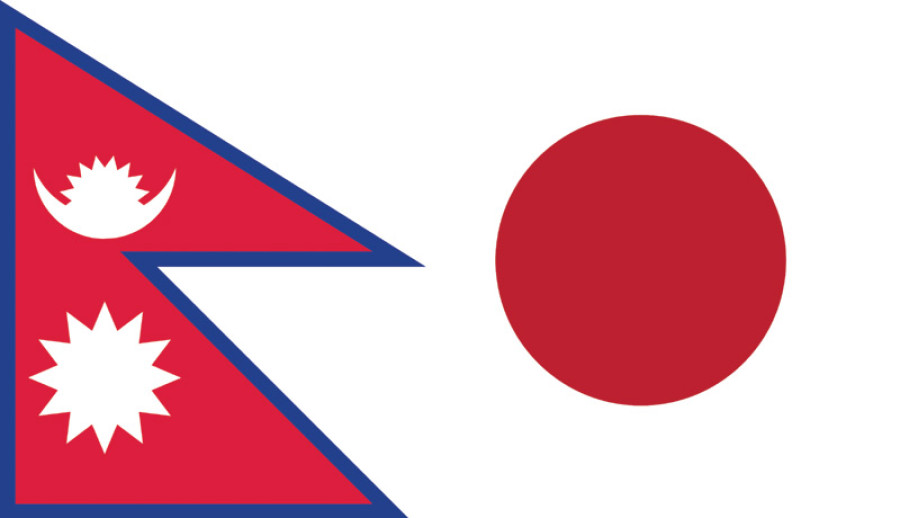Opinion
Rising like the sun
Nepal-Japan ties have expanded rapidly since Kawaguchi’s visit over a century ago
Bhim Udas
Nepal and Japan are geographically distant but close in terms of culture, religion, way of life and sentiments. Asian values are deeply rooted in the society and people of both countries. A strong sense of patriotism and love for their own history, culture and identity is the common nature of Japanese and Nepalis. Though diplomatic relations were established between Nepal and Japan only in 1956, a spiritual bond has existed since the introduction of Buddhism in Japan in the sixth century. This year, we are celebrating the diamond jubilee of the establishment of diplomatic relations between Nepal and Japan.
The Japanese people are attracted by the beauty, ancient culture and traditions of Nepal. Since 1952, Japanese mountaineers have been conducting expeditions to various high mountains in Nepal. An 84-year-old Japanese alpinist climbed Mt Everest three times and set a world record. Another Japanese mountaineer Junko Tabei was the first woman to scale the world’s highest peak in 1975. Another attraction for the Japanese people is Lumbini, the birthplace of Gautam Buddha. World renowned Japanese architect Kenzo Tange designed a master plan to develop Lumbini, which today has become an international centre for Buddhism.
Japanese aid
Japan is the third largest economy in the world after the US and China. Nepal-Japan relations operate at three levels—political, government and people. Japan is a true development partner and one of the major donors to Nepal. It has been providing financial assistance to Nepal through various channels, namely soft loans, grants and technical cooperation. Japan has provided $3,042 million in bilateral grants and technical assistance to support Nepal’s development efforts between 1969 and 2014. Japan is also assisting community development through grass roots human security projects in rural areas. From 1992 to 2015, it provided $6.3 million to support 179 such projects in different parts of the country. In addition, more than 1,300 Japanese volunteers have been working together with their Nepali counterparts in different development sectors since 1970.
Some of the major development projects to which Japan has contributed are Kulekhani Hydroelectric Project, Udayapur Cement Factory, Tribhuvan University Teaching Hospital, modernisation of Tribhuvan International Airport, Dhulikhel-Bardibas Road (BP Highway), Janakpur Agriculture Extension Project, Kaligandaki Hydroelectric Project, Melamchi water system, MW Tanahu Hydel Project and road improvement project in Kathmandu. Recent Japanese-supported projects are Nepal’s first tunnel highway at Nagdhunga and Bhaktapur-Dhulikhel road extension.
Since 1902, Nepali students have been going to Japan for higher education to learn mostly science and technology and other development subjects. Today, their number has increased to 16,000, which is the third highest number of foreign students after Chinese and Vietnamese students. Similarly, a large number of skilled and semi-skilled Nepalis have been working in Japan and contributing to Japan’s economic growth. As of March 2016, their number has reached more than 55,000, putting them in the sixth position among foreign workers. In recent years, Nepalis have been running hundreds of restaurants in Japan.
Politics and culture
On the political front, Nepal has been supporting Japan for a permanent seat in the United Nations Security Council. Japan appreciates Nepal’s position on such international issues. People-to-people relations between Nepal and Japan are exemplary. Buddhist monk Ekai Kawaguchi was the first recorded Japanese national to visit Nepal in 1899. He presented a 45-page letter to the then prime minister Chandra Shamsher in which he recommended development in the areas of education for all, improvement in governance, establishment of industries, exploration of mines, building of infrastructure and banking. Following his recommendations, the government of Nepal sent a group of eight students to Japan for higher education in 1902.
The Japanese people love Nepal as much as Nepalis love Japan and its people. It is observed that when Japanese visitors come to Nepal, they fall in love with the people, nature and culture and come back again and again. Some have returned 40 to 50 times and they continue to do so. When a group of Japanese established the Japan-Nepal Society in Tokyo in 1964, a group of Nepalis formed the Japanese Society in Kathmandu in 1965. The Nepal-Japan Friendship and Cultural Association was established in Kathmandu in 1979. Friendly relations have also been established between cities and villages in Nepal and Japan. Sister-city relations were established between Kathmandu and Matsumoto, Pokhara and Komagane City of Nagano, Tukuche village of Mustang and Toga village of Toyama prefecture, and between Namche village of Solukhumbu and Aoki village of Nagano prefecture. There are plans to develop more sister-city relations between the two countries.
Exchange of visits by royalty, head of government, parliamentarians and bureaucrats of Nepal and Japan has significantly contributed to developing a close friendship since the establishment of diplomatic relations. In 1960, the late king Mahendra’s visit to Japan and Emperor Akihito’s (then the crown prince) visit to Nepal laid a strong foundation to develop friendly relations between the two countries. The late king Birendra’s visits in 1978 and 1983, Prince Akihito’s second visit in 1975 and Prince Akishano’s visit in 1997 further cemented the close relations. The visits of Japanese premiers Ryotaro Hashimoto (in 1999 and 2002) and Mori (in 2000) demonstrate the importance given by Japan to developing relations with Nepal. Similarly, the visits of Nepali premiers Sher Bahadur Deuba and GP Koirala and several foreign and finance ministers have contributed in further strengthening our bilateral relationship.
Countries develop their foreign policy based on their national interest. In the present world, economic progress and prosperity have become the national interest of the developed and the developing countries. Hence, a majority of countries including Japan have followed economic diplomacy as the main priority in their foreign policy. Nepal too has adopted economic diplomacy while conducting its foreign relations, but this needs more focus and continuity.
Udas is a founder of the NRN Movement and a former senior UN official




 19.12°C Kathmandu
19.12°C Kathmandu











